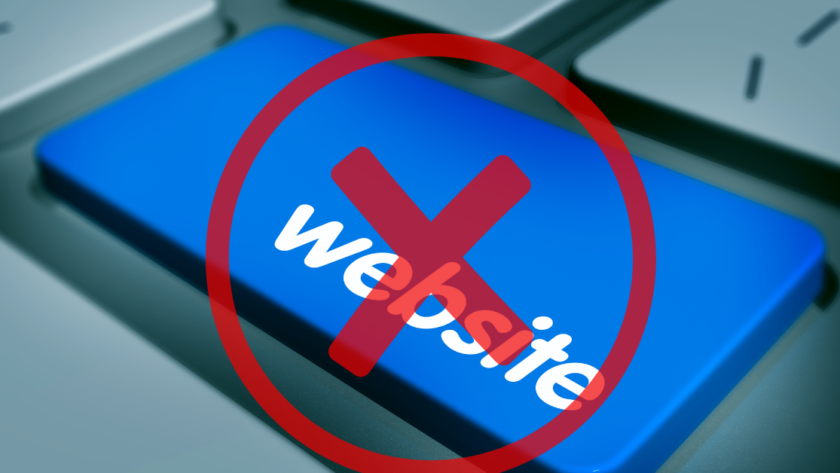Pay-per-click (PPC) affiliate marketing without a website is improving the digital marketing landscape. This approach allows you to promote products and earn commissions without the need for a personal website.
It’s an attractive option for both newcomers and experienced marketers looking to diversify their strategies.
The concept is straightforward: instead of driving traffic to your own website, you direct potential customers straight to the merchant’s site using your unique affiliate link.
This direct linking method, combined with PPC advertising, creates a powerful synergy that can lead to quick results and substantial earnings when executed correctly.
To succeed in this arena, you’ll need to master PPC advertising, understand various platforms, and develop a keen eye for profitable offers. Your ability to analyze and improve campaigns will be crucial to your success.
The Theory Behind PPC Affiliate Marketing
This strategy leverages the immediacy of paid advertising to connect potential customers with products they’re interested in.
By bypassing the need for a website, you’re removing a step in the customer journey, potentially increasing conversion rates.
The practical applications of this approach are large. You can promote physical products, digital downloads, services, or even other people’s courses and webinars.
The key is to find offers that align with your target audience’s interests and have attractive commission structures.
One of the main challenges you’ll face is standing out in a crowded marketplace. Without a website to build trust and showcase your expertise, you’re relying solely on your ad copy and the product’s landing page to convert visitors.
To overcome this, you’ll need to become adept at crafting compelling ad copy that speaks directly to your audience’s pain points and wants.
Implementing a PPC Affiliate Campaign
1. Choose Your Niche
Start by selecting a niche that you’re passionate about or have knowledge in. This will make it easier to understand your audience and choose relevant products.
Consider factors such as market demand, competition, and potential profitability when choosing your niche.
2. Research Affiliate Programs
Look for programs that allow direct linking and offer competitive commission rates. Networks like ClickBank, CJ Affiliate, and Amazon Associates are good starting points.
When evaluating programs, consider:
- Commission rates and structure
- Cookie duration
- Payment terms and thresholds
- Product quality and reputation
- Conversion rates
- Affiliate support and resources
3. Select Your Product
Choose a product with a high conversion rate and a strong landing page. Remember, you’re relying on the merchant’s page to close the sale.
Look for products that:
- Solve a specific problem or fulfill a clear need
- Have positive customer reviews and testimonials
- Offer competitive pricing
- Provide high-quality sales materials (images, videos, etc.)
- Have a clear and compelling value proposition
4. Choose Your PPC Platform
Decide where you want to run your ads. Google Ads, Facebook Ads, and Bing Ads are popular choices, each with their own strengths and audience demographics.
Consider factors such as:
- Your target audience’s online behavior
- The platform’s targeting options
- Ad formats available
- Minimum budget requirements
- Competition and cost-per-click in your niche
5. Set Up Tracking
Use affiliate tracking software or URL parameters to accurately watch your campaign’s performance. Proper tracking allows you to:
- Identify which ads and keywords are generating sales
- Calculate your return on investment (ROI)
- Optimize your campaigns based on data-driven insights
- Detect and prevent click fraud
6. Create Your Ad
Craft compelling ad copy that highlights the product’s benefits and includes a clear call-to-action. Your ad should:
- Address the target audience’s pain points or wants
- Highlight unique selling points
- Create a sense of urgency or scarcity
- Use persuasive language and emotional triggers
- Include relevant keywords for search ads
7. Launch and Monitor
Start your campaign with a small budget and closely watch it’s performance. Look at metrics like:
- Click-through rate (CTR)
- Conversion rate
- Cost per conversion
- Return on ad spend (ROAS)
- Quality Score (for Google Ads)
8. Optimize and Scale
Based on your initial results, refine your targeting, adjust your bids, and test different ad variations. Once you’ve found a winning combination, gradually increase your budget to scale your profits.
Continuous optimization involves:
- A/B testing ad copy and creatives
- Refining keyword lists and match types
- Adjusting bid strategies
- Expanding to new ad platforms or formats
- Exploring additional products or offers
Common Pitfalls and How to Avoid Them
Overspending on Non-Converting Traffic
To avoid this, start with a small daily budget and set strict limits on your cost-per-click (CPC). Monitor your campaigns closely and be prepared to pause or adjust underperforming ads quickly.
Click Fraud
Click fraud can drain your budget without generating real leads. Use the fraud prevention tools provided by your chosen PPC platform and consider third-party solutions for additional protection.
Some strategies to combat click fraud include:
- Setting up IP exclusions
- Using negative keywords to filter out irrelevant traffic
- Implementing click tracking and analysis tools
- Monitoring for suspicious activity patterns
Ad Fatigue
Your audience may become desensitized to your ads if they see them too often. Combat this by:
- Regularly refreshing your ad creative
- Testing new angles and messaging
- Using ad scheduling to show your ads only during peak converting hours
- Implementing frequency capping to limit ad exposure per user
Adapting PPC Affiliate Marketing to Different Scenarios
Physical Products
Focus on visually appealing ads that showcase the item’s features. Use high-quality product images and highlight unique selling points.
Consider creating carousel ads or video ads to show the product in action.
Digital Products
Emphasize the immediate value and ease of access. Highlight instant delivery, no shipping costs, and the convenience of digital consumption.
Use language that appeals to the want for instant gratification.
Service-Based Offers
Highlight the problem your offer solves and it’s unique selling points. Focus on the benefits and outcomes rather than the features.
Use social proof and testimonials to build trust and credibility.
Competitive Niches
Try targeting long-tail keywords or specific audience segments to find less saturated opportunities. Consider using geo-targeting to focus on underserved markets or demographics.
Explore niche-specific ad platforms that may offer lower competition and costs.
Advanced Techniques for PPC Affiliate Marketing
Retargeting Campaigns
Set up retargeting campaigns to re-engage users who have shown interest but haven’t converted. This can be particularly effective for high-ticket items or products with longer consideration periods.
Ad Extensions
Utilize ad extensions to provide additional information and increase the visibility of your ads. This can include sitelink extensions, callout extensions, and structured snippets.
Dynamic Keyword Insertion
Use dynamic keyword insertion to create more relevant ads that match users’ search queries. This technique can improve click-through rates and Quality Scores.
Dayparting
Analyze your campaign data to identify the most profitable times of day or days of the week. Adjust your bids or ad scheduling accordingly to maximize ROI.
Lookalike Audiences
On platforms like Facebook, create lookalike audiences based on your best-performing customer segments. This allows you to expand your reach to similar high-potential users.
Automated Bidding Strategies
Experiment with automated bidding strategies provided by ad platforms. These can help improve your bids based on your campaign goals, such as maximizing conversions or target ROAS.
Measuring Success and Scaling Your Campaigns
Key Performance Indicators (KPIs)
Track and analyze these essential KPIs to gauge the success of your campaigns:
- Return on Ad Spend (ROAS)
- Earnings Per Click (EPC)
- Conversion Rate
- Click-Through Rate (CTR)
- Cost Per Acquisition (CPA)
- Lifetime Value of a Customer (LTV)
Scaling Strategies
Once you’ve identified profitable campaigns, consider these scaling strategies:
- Gradually increasing your daily budget
- Expanding to new ad platforms or formats
- Testing similar products or offers
- Targeting new geographic regions or demographics
- Creating lookalike audiences based on your best-performing segments
Continuous Learning and Adaptation
Stay up-to-date with industry trends, platform updates, and new marketing techniques. Attend webinars, read industry blogs, and participate in affiliate marketing forums to expand your knowledge and skills.
Legal and Ethical Considerations
FTC Disclosure Requirements
Ensure compliance with Federal Trade Commission (FTC) guidelines by clearly disclosing your affiliate relationships. This includes using suitable disclosures in your ad copy or landing pages.
Platform-Specific Policies
Familiarize yourself with the policies of each ad platform and affiliate network you use. Violating these policies can result in account suspension or termination.
Data Privacy Regulations
Stay informed about data privacy regulations such as GDPR and CCPA. Ensure your marketing practices follow these regulations, especially when collecting or handling user data.
Tools and Resources for PPC Affiliate Marketers
Keyword Research Tools
- Google Keyword Planner
- SEMrush
- Ahrefs
- Ubersuggest
Competitor Analysis Tools
- SpyFu
- iSpionage
- SEMrush
Ad Creation and Testing Tools
- AdEspresso
- Canva
- Unbounce
Tracking and Analytics Tools
- Google Analytics
- ClickMeter
- Voluum
Affiliate Networks and Platforms
- ClickBank
- CJ Affiliate
- ShareASale
- Amazon Associates
Exercises to Reinforce Your Learning
- Set up a small budget campaign ($50-$100) promoting a product you genuinely believe in. Track it’s performance over a week and analyze the results.
- Write five different ad variations for the same product, focusing on different benefits or angles.
Test them against each other to see which performs best.
- Research and compare the policies of three different affiliate networks regarding direct linking.
Note the differences and how they might affect your campaigns.
- Create a customer avatar for your chosen niche, including demographics, interests, and pain points.
Use this to inform your ad targeting and copywriting.
- Analyze a successful competitor’s PPC ads in your niche.
Identify what makes their ads effective and how you can apply similar principles to your campaigns.
People Also Asked
What is PPC affiliate marketing?
PPC affiliate marketing is a strategy where affiliates use pay-per-click advertising to promote products or services and earn commissions on resulting sales.
Can I do affiliate marketing without a website?
Yes, you can do affiliate marketing without a website by using direct linking strategies and PPC advertising platforms.
Which PPC platform is best for affiliate marketing?
The best PPC platform depends on your niche and target audience. Google Ads, Facebook Ads, and Bing Ads are popular choices for affiliate marketers.
How much money do I need to start PPC affiliate marketing?
You can start PPC affiliate marketing with as little as $50-$100, but having a larger budget allows for more testing and faster optimization.
Is PPC affiliate marketing profitable?
PPC affiliate marketing can be highly profitable when done correctly, but it requires careful planning, testing, and optimization.
What are the best niches for PPC affiliate marketing?
Profitable niches for PPC affiliate marketing often include health and wellness, personal finance, technology, and self-improvement.
How do I choose the right affiliate products to promote?
Choose products with high commission rates, strong conversion rates, and a good reputation in your chosen niche.
What is a good conversion rate for PPC affiliate marketing?
A good conversion rate varies by industry, but generally, 2-5% is considered average, while 10% or higher is excellent.
How can I improve my PPC affiliate marketing ROI?
Improve your ROI by optimizing your ad copy, targeting, bidding strategies, and landing page quality.
Are there any risks in PPC affiliate marketing?
Risks in PPC affiliate marketing include overspending on non-converting traffic, click fraud, and potential account suspensions for policy violations.
Key Takeaways
- PPC affiliate marketing without a website offers a low-barrier entry into affiliate marketing.
- Success hinges on careful product selection, compelling ad copy, and diligent campaign optimization.
- Start small, track meticulously, and scale gradually to minimize risks and maximize profits.
- Continuous learning and adaptation are crucial in this fast-paced, competitive field.
- The skills developed in this approach are transferable to many other areas of digital marketing.




